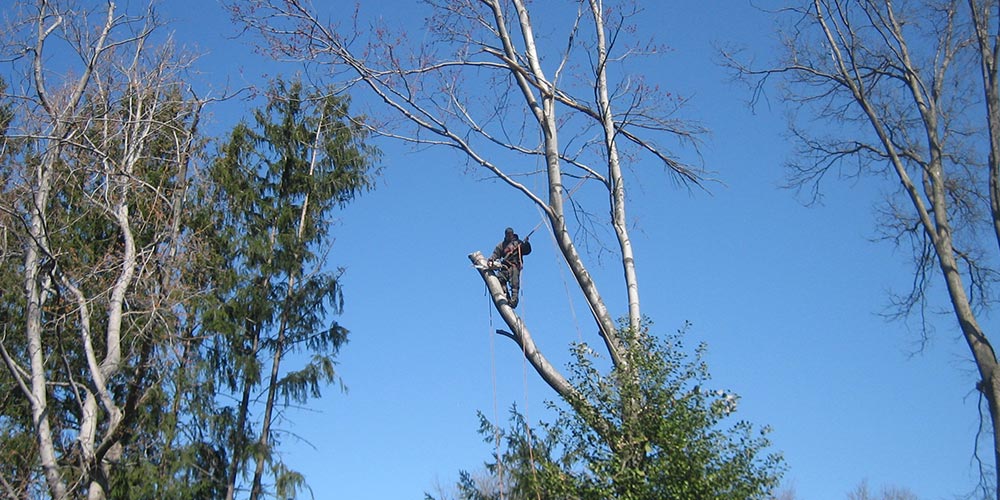
All About Tree Trimming and How to do It Right
August 11, 2023
It is critical to understand how to care for your trees so that they can grow effectively. One way to take care of the trees is by trimming them. For the best outcome, you have to trim the trees properly.
To help you out, continue reading to learn everything you need to know about tree pruning, including the optimum time to do it.
Why should you trim your trees?
Tree trimming, or pruning, is necessary to ensure they thrive and live a long time. When doing the trimming, target dead limbs and unhealthy areas.
This is because dead branches and limbs can harm a tree’s growth. This is because they steal nutrients and space from healthy areas of the tree, preventing them from developing as well as you would want them.
According to tree-cutting services providers, pruning trees helps prevent disease spread. When the diseased portions of the tree are removed, the disease is prevented from spreading to the remainder of the tree and eventually killing it.
Wilting limbs, yellowing leaves, patches on the tree’s bark, and withering branches are all symptoms of an illness. If you notice fungus on your tree, it could indicate that the plant is withering and rotting, necessitating additional examination.
Many trees produce fruits in addition to giving beautiful surroundings. Trimming your fruit tree will ensure plenty of healthy, nutritious fruit each season.
Without dead or diseased limbs nearby, the fruit is considerably more likely to mature without succumbing to the blight.
Pruning the plant provides additional benefits aside from improving its health. Removing the dead limbs reduces the chance of them falling and causing harm or property damage.
When trees reach a certain size, their limbs can become exceedingly heavy. These branches can cause substantial damage if you don’t trim them early enough.
By trimming, you reduce the size of the limbs, which comes in handy in keeping you and your family and property safe.
When is the best time to trim trees?
The optimal time to prune trees is in the middle to late winter. This is because most tree species go into dormancy during the winter months, and they are not growing.
Removing dead tree portions while the plant is still forming makes way for fresh growth later. The tree will restart growth as the weather warms up.
The tree can grow without impediments or complications if there are no dead limbs from the winter.
While this is the case, you should note that the type of tree you have will determine when you should trim it.
Trees that bloom early in the spring should be pruned much earlier in the winter than trees that bloom later in the spring.
Knowing when your tree sprouts new leaves and blossoms each year will help you determine when to start cutting.
Which is the best way to trim trees?
There are many ways you can trim your tree. You should note that varied trimming methods result in mixed outcomes for your tree.
If this is the first time you are trimming a tree, here are some of the ways you can trim it for the best outcome:
Crown thinning
Crown thinning refers to removing limbs from a tree’s inner crown. This allows more light to reach the densest parts of the tree, allowing them to expand and photosynthesize.
It also creates greater space for air to travel freely throughout the tree, providing oxygen to the entire plant.
You shouldn’t remove more than one-fourth of the inner crown at a time while using this procedure. This ensures the tree retains its general shape and structure and does not become too weak.
Crown lifting
This procedure involves removing limbs from the tree’s crown’s lower part. As a result, most of the crown begins at a higher place, “lifting” the crown.
You do crown lifting to allow way for anything that may need to pass beneath the tree, such as people, automobiles, and equipment.
Lifting the crown also permits light to reach the lowest part of the tree.
When using the crown lifting method, make sure the crown still accounts for two-thirds of the entire height of the tree. This will keep the tree healthy while making it less invasive.
Crown reduction
While crown thinning and lifting refer to different parts of the tree, crown reduction refers to the entire crown. This procedure entails removing any dead or diseased limbs from the crown.
Crown reduction frequently preserves the original contour of the tree because no specific location is targeted.
You usually do it as a last resort only if sick or dead limbs are discovered in the tree. The procedure entails cutting the afflicted parts in a way that allows them to regenerate over time.
In addition to minimizing the threat of illness, it also helps reduce wind resistance and manage the size of the tree.
Other ways to keep your tree healthy
Besides pruning your tree, there are many other ways you can keep your tree safe and healthy. These ways include:
Getting rid of grass around the tree: Although grass growing at the base of trees appears beautiful, it can greatly impede the tree’s growth. When grass grows at the base of a tree, it absorbs nutrients and water from the plant’s roots. Weeds are frequently seen in grass, which further impedes tree growth.
To keep your tree growing healthy, make it a habit to remove the grass and any weeds growing around the tree.
Protect the tree trunk: Every tree relies on its trunk. It provides structure and support and distributes nutrients from the tree’s roots to the rest of the plant.
Due to the critical role of the trunk, it is critical to preserve it, especially for young trees. Tree removal companies Chevy Chase advise wrapping the trunk with plastic and nourishing the surrounding region.
